Spider Plants (Chlorophytum comosum) are also known as Airplane Plants. Airplane plants are low-maintenance plants, but they can still suffer from problems such as brown or black leaves, general wilting, root rot, or burned leaves.
Most times, the issues with these plants are due to overwatering, underwatering, or excessive sun exposure.
- Related Article: How Do You Take Care of a Spider Plant Indoors
Ready to troubleshoot those spider plant problems away? Let’s put an end to those worries. This guide will help you take care of brown tips on spider plants, curled-up leaves in spider plants, and other common spider plant problems.
1. Brown Leaves
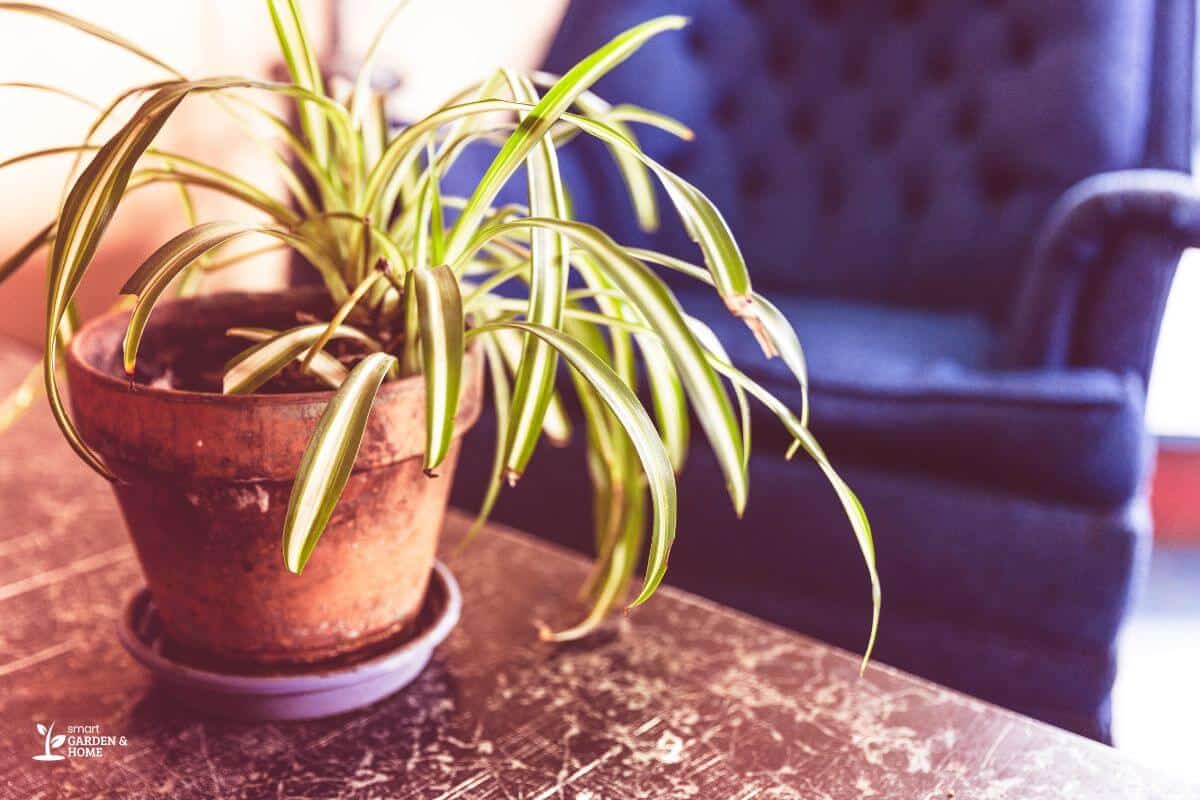
The most common problem for indoor spider plants is brown leaf tips. Usually, the cause of browning tips is underwatering or too much sun exposure.
Keep you humid-loving spider plant in humid conditions by placing a humidifier close to it, grouping it with other plants, or by purchasing a humidity tray.
Another possible cause of brown leaf tips is the high presence of chlorine in water used for the plant. To avoid this issue, make sure you water your airplane plant every time the top two inches of its soil is dry.
If you need help with this, you can purchase a moisture meter to help you get your watering schedule for your dry plant right.
If you’ve been using tap water, switch to purified or rain water or let tap water sit in a container overnight before giving it to your plant.
Finally, place your spider plant in a spot where it is exposed to bright indirect sunlight and avoid direct sunlight.
2. Black Leaves
If the leaves of your spider plant start turning black, most likely it’s because the plant has been overwatered. Alternatively, it could mean there has been a fertilizer buildup or the plant is sick.
The best solution is to remove the black leaves and change give the plant fresh soil. If you think you’ve been giving it excess water, cut back on your watering and check if the plant is suffering from root rot.
Black tips are another story and they might indicate bacterial leaf blight. Overcrowded plants usually result in leaf blight.
The symptom of this disease is usually small lesions on the tip of the leaf which eventually turn black. This will ultimately lead to leaf loss in the entire plant.
3. Root Rot
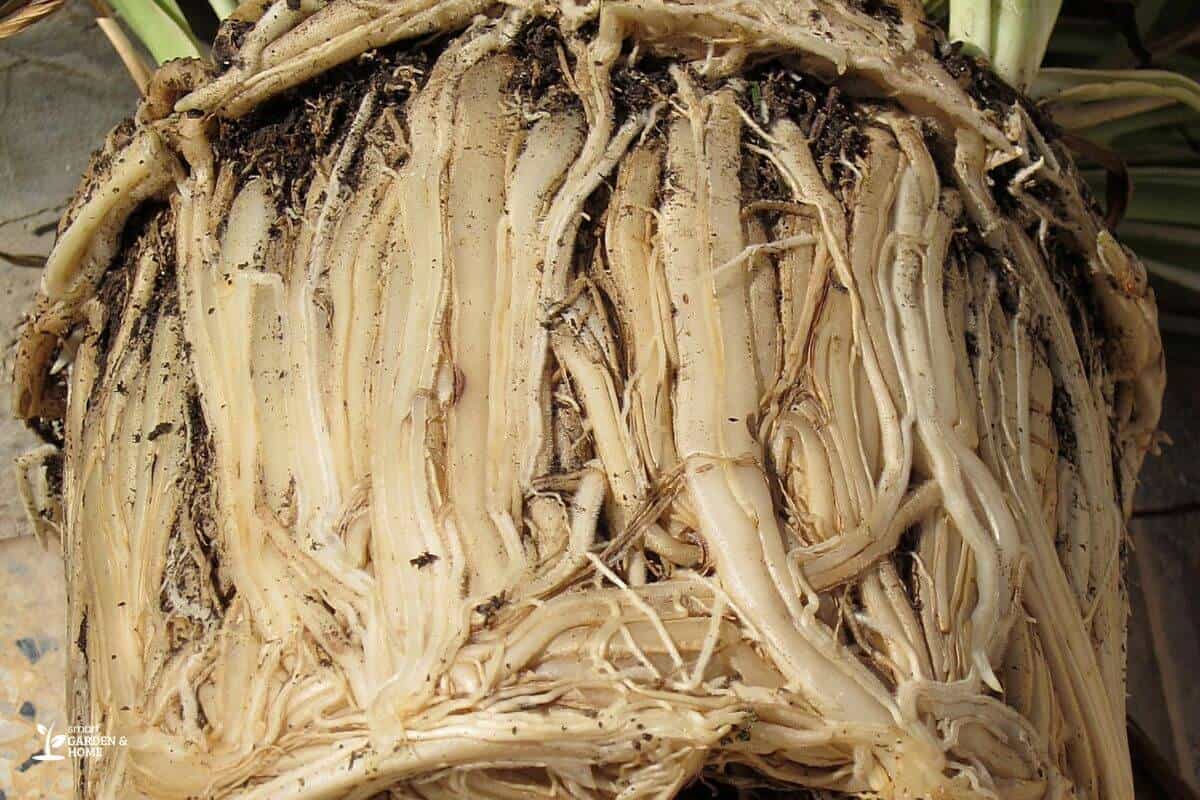
Spider plants are susceptible to root rot if they are overwatered or placed in fresh soil and pots with poor drainage.
If you start noticing signs such as wilting and yellow leaves, slow growth, and soft, brown roots, you should act quickly to avoid the death of your spider plant.
Firstly, all rotten roots should be cut away and the leaves should be trimmed as well. The plant can then be placed in a new pot with fast-draining soil mixes and watered. It is also important to place this plant in a place with good humidity levels.
If taken care of properly, spider plants can recover even if a very small root system is left.
4. Leaves Curling
Curled spider plant leaves are usually indicative of stress. This stress can be brought about by different factors such as temperature fluctuations and improper light levels.
If could also mean that you have a watering issue.
To solve this concern, you must place your plant in the correct location at a temperature that does not go below 55°F and does not exceed 80°F.
Give it enough bright indirect sunlight, and develop a watering schedule that works.
5. Limp and Droopy Plant
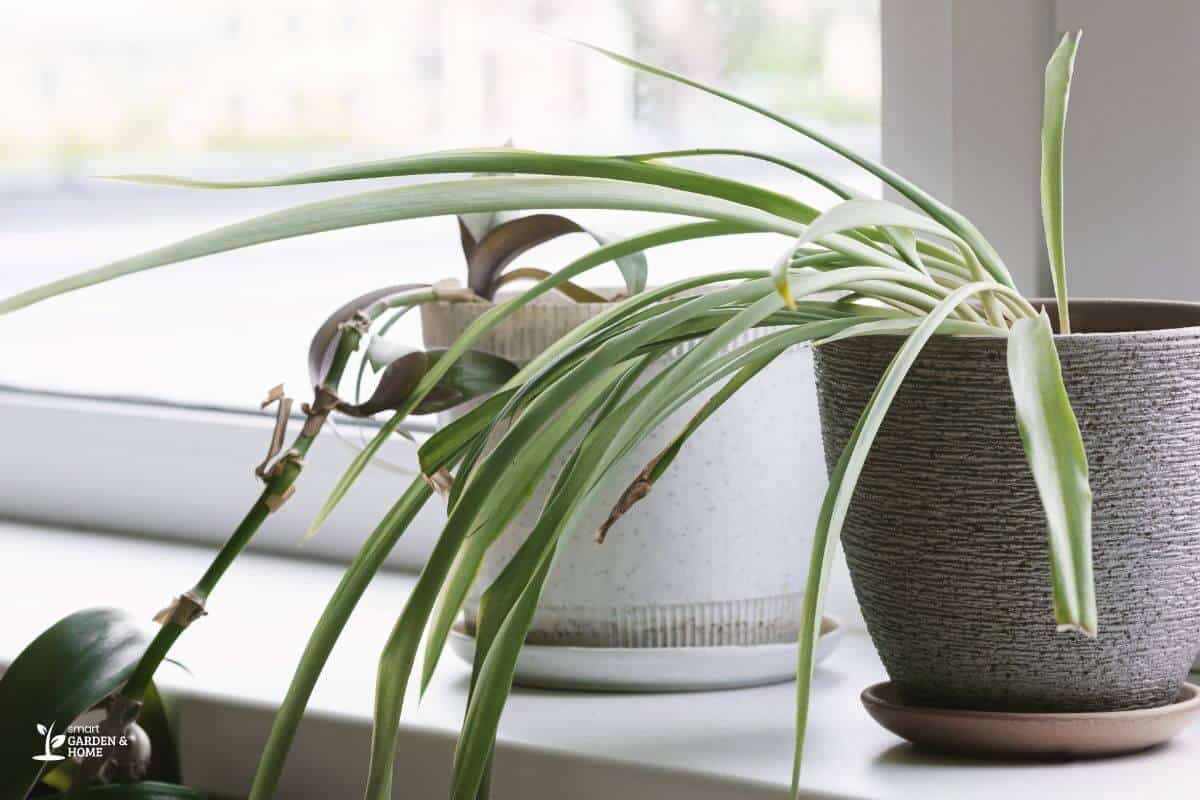
A wilting or droppy plant means that the plant is dried up and is not getting the right amount of water.
This can also happen when the light levels are not right as when it is getting too much direct sunlight. The plant is drying out faster than the root is able to absorb the water.
Consider watering your plant immediately and moving it to a shady spot. If the spider plant is in really bad shape, you can soak it in water for about 15 minutes.
In rare cases, indoor plants might get droopy because of the opposite reason: too much water. To avoid this, make sure that the soil surface is dry before you water again.
6. Scorched Leaves
Scorched leaves appear bleached or burned and they result from too much sun exposure. Spider plants are particularly susceptible to this problem as they are tropical plants adapted to grow in the shade of taller trees.
To fix this problem simply place your spider plant in a spot where it gets bright but indirect light and wait. Once the plant has recovered, you can cut the damaged leaves.
7. No New Growth
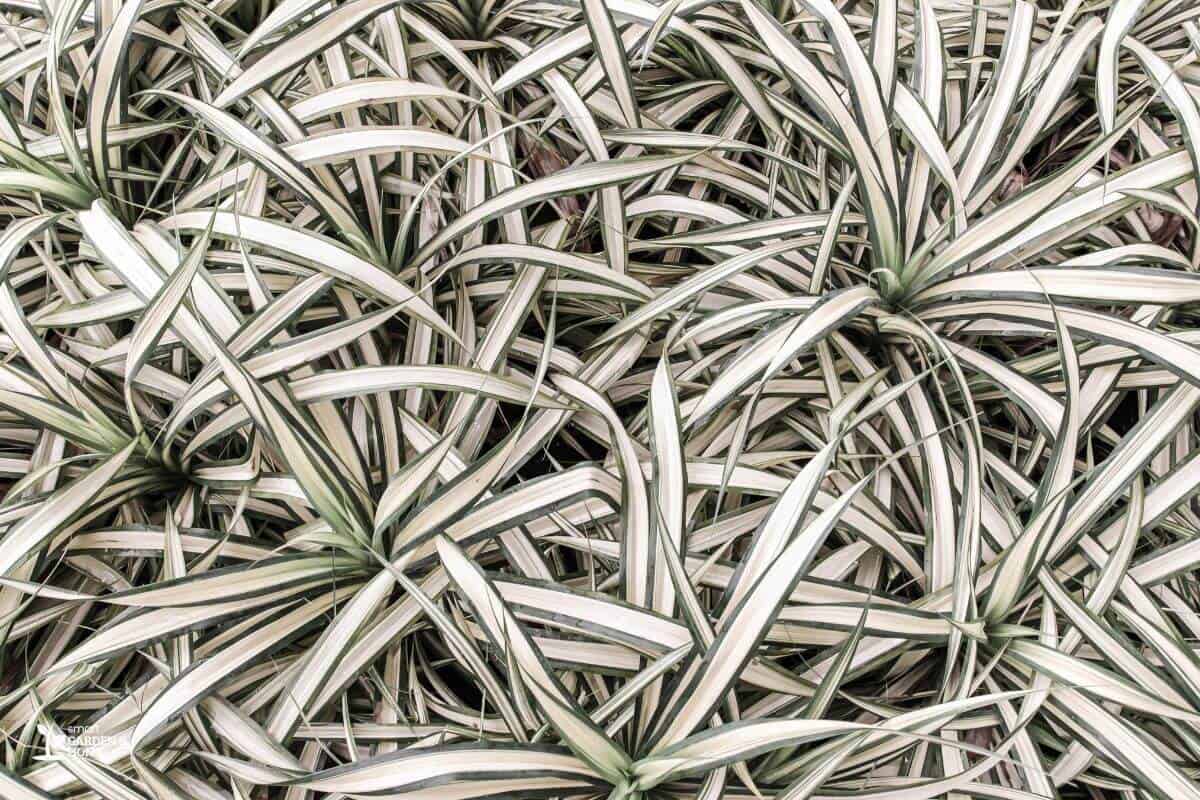
During the colder season, it’s perfectly normal for spider plants to stop growing, as the light and temperature conditions aren’t ideal for this species.
If this occurs during spring and summer though it might be due to them not getting enough water. In this case, simply adjust the amount of water you give to your spider plant to give the soil moisture.
If it’s the spiderettes that have stopped growing, then the plant has been overfertilized or is placed in a pot that is too large for its liking.
Stop fertilizing for a while and use a weaker one when you resume fertilization. You can also repot the plant to a smaller pot, as being slightly root-bound will encourage it to grow more baby spider plants.
8. White Spots on Leaves
When spider plants develop white spots on their leaves it can be a sign of a spider mite infestation. These tiny insects live on the underside of leaves where they feed from plant lymph.
If the infestation is still manageable, try spraying the affected plant with neem oil first and see if that works.
If the infestation continues, it would be best to cut off the infected parts. Make sure you use a sterile cutting tool.
9. Falling Leaves
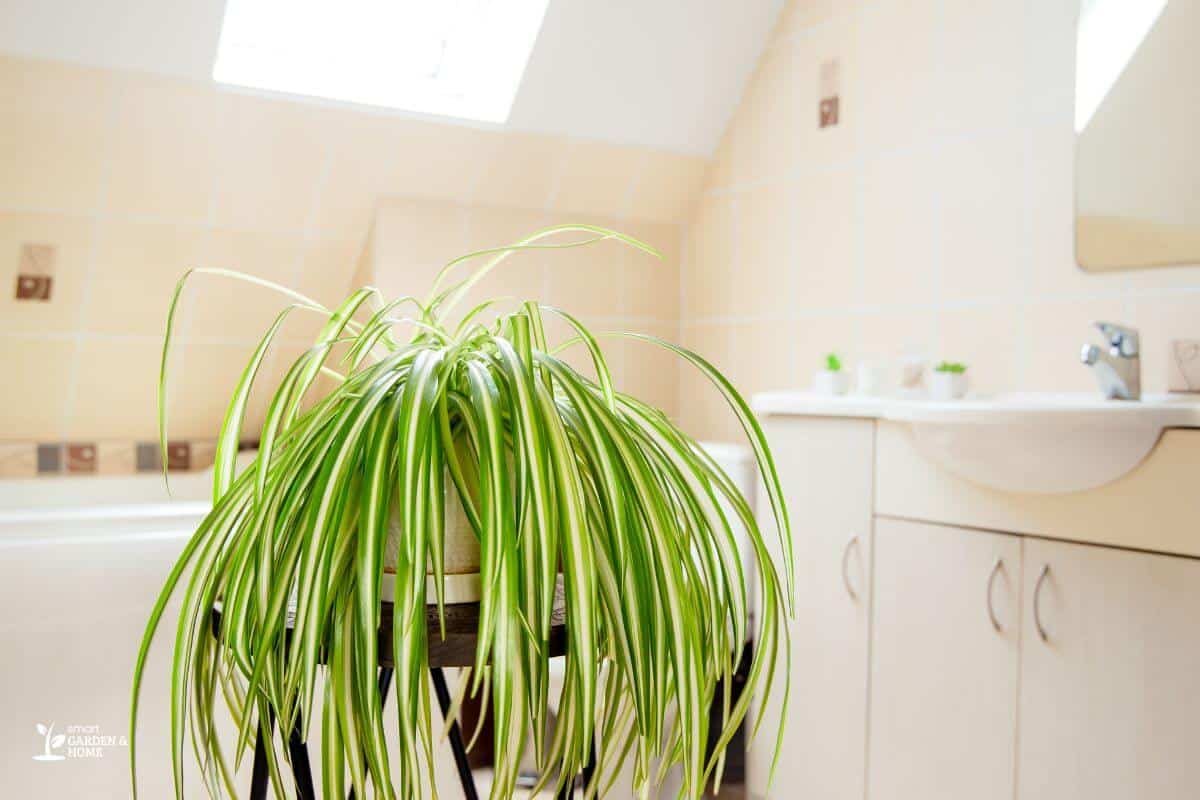
When leaves start falling it means the spider plant has been overwatered. Spider plants don’t need excess water, so you should always wait until the soil has dried before watering them again.
After the leaves have dropped off, don’t water for a while to let the plant recover. Make sure you are using well-draining soil and that the topsoil is loose to allow some airflow.
10. Bonus: Presence of Pests
We’ll add another common problem on this list as a bonus and that is the presence of pests on your spider plants. Sure we have touched on mites above but there are many more pests to be warned about.
Common pests include the mealybug, aphid, and fungus gnat. When these are not managed, they can slowly deteriorate the condition of your plant and result in sick spider plants.
You can easily eliminate these through prevention such as maintaining a clean space, or by using organic pesticides or biological pest controls.
Final Thoughts on Spider Plant Problems
Spider Plants are hardy plants, but they are not exempted from facing the problems that plants may encounter.
It is vital that you learn how to identify and prevent these problems from getting worse.
Your plants are not only dealing with fertilizer burns, bacterial leaf spots, and poor water quality.
Leaf damage can also be caused by pest infestations which are also one of the most common threats to maintaining healthy spider plant leaves.
We hope that you have major takeaways from this guide. Thrilled to know more? Check out these amazing articles:
- Spider Plant Spiderettes
- Spider Plant Watering
- How Long Do Spider Plants Live
- My Spider Plant Has Bugs
- Do Spider Plants Attract Spiders
Sources:


This is my 3rd spider plant. Leaves always turn brown in center and new shoots on bottom turn dark brown and fall off. I’ve change to purify water from Kaden water machine/ beauty water, soil is equal parts cactus with peat moss. I have sun screens in my apartment when I bought plant from Home Depot I reported and water it. That was a week ago. Today leaves are like I said. Very frustrating.
Hi Karll, so sorry to hear about the troubles you’re having. I can understand the frustration because it can be hard to diagnose what’s going on. A couple things to check:
1. Could it be overwatering? Try waiting until the top soil surface is dry before watering.
2. It could be the soil mixture. Check out our article on soil for spider plants. We generally don’t recommend cactus soil, but it can be combined with peat moss like you’re doing. Keep an eye on it and see if water’s draining too fast or even not enough leading to overwatering.
3. Transplant shock could also be a reason. Since you recently bought and repotted the plant, it may be experiencing transplant shock.
Hope these tips help you diagnose what’s going on!